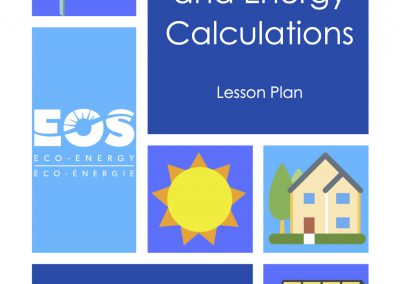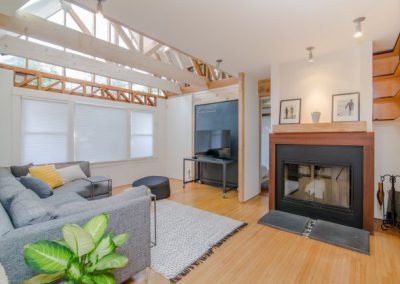** The activity has been adapted for French Immersion learners Grades 6-8 → Les minimaisons
Overview
This kit features hands-on and inquiry-based learning activities exploring, creating, and constructing sustainable options for future home design. It is an invitation to experience a small snapshot of each of our 5 Centres of Excellence (Energy, Health, Entrepreneurship, Digital Innovation and Skilled Trades and Manufacturing). Happy Building!
NB Curricular Connections
English Language Arts:
- Strand: Interactions – Big Idea: Expression – Skill Descriptor: Express and discuss thoughts, feelings, experiences, ideas, and opinions, and consider those of their peers.
- Strand: Reading – Big Idea: Reading Comprehension – Skill Descriptor: Connect and respond personally and critically to text
Mathematics:
- Strand: Shape and Space – Big Idea: Measurement
Science
- Strand: Learning and Living Sustainably – Big Idea: Responsible and Sustainable Application
Personal Wellness
- Strand: Career Connected Learning – Big Idea: Experiencing Potential Career Pathways – Skill Descriptor: Engage in frequent and ongoing career connected experiential learning to learn about preferred career pathways and develop personal competencies.
What You’ll Need
- Pencils
- Design Template Sheet (included in PDF)
- Chart paper (1 sheet)
- PowerPoint – Tiny Homes
- Read Aloud – If I Built a House (By: Chris Van Dusen)
- Tiny Home Feedback Sheet (included in PDF)
- Maker Space materials: scissors, multi-colored cardstock, construction paper, tape, glue, aluminum foil, plastic wrap, white paper, etc.)
- Cm Grid Paper (printed on cardstock, 4-5 sheets per group, included in PDF)
- Lego Mini Figure Client Cards (included in PDF)
Instructions
DISCUSSION: Gather your students together in a usual meeting place in your classroom. Using the PowerPoint, “Tiny Homes”, go to Slide 2 and ask: “What makes a house a home?” Begin to jot down ideas generated on chart paper or on a whiteboard. (Be sure to include the MUSTS – amenities, style, design features, space, etc.)
READ ALOUD – If I Built a House (by: Chris Van Dusen). Before reading, give students the chance to complete the sentence, “If I built a house….” to a partner nearby. Have 2-3 students share their completed sentences with the group.
TINY HOMES: As amazing as Jack’s ideas for his dream house are in the book, the current trend in home design is actually – going small! Review and discuss slides 3, 4 and 5 of the PowerPoint with the students. At the bottom of Slide 5, when thinking about Tiny Homes Impact: Divide students into groups (by tables or location) and assign 1 of these topics to each group – environment, community & world, and economy – and then take the time for each group to share their ideas with the class. Continue to Slide 6 for how technology is playing a role in developing tiny homes, as well.
CHALLENGE: Students will create a tiny home out of paper for a Lego Minifigure client. They must include: all necessary amenities (bathroom, kitchen, bedroom, and a living space), 2 energy efficient products or systems (use provided checklist), showcase their LEGO character’s personality, perimeter of 75 cm or less OR area of 225 cm2 or less, removable roof (for viewing inside).
Divide students into small groups. Together, read over the challenge on Slide 7, the design template page, and the energy-saving options sheet. Then, pass each group 1 Lego Minifigure client card to provide information about this character’s tiny home dreams. (Students do have the option of bringing one in from home and creating a biography card to use for this challenge, too!) Before students get their hands on the maker space materials, give them time to see what they can use, read over their Lego Minifigure client card, as well as sketch out their initial ideas using the Design Template. See past exemplars on Slide 8. Once they have a plan, let them build!
PRESENTATIONS: House Viewing – Before presenting their houses in front of the class, give students the opportunity to do a viewing of each group’s house up close with a gallery walk. Students can cut out their Lego minifigure outline on the client card to ensure their client fits! Allow students to provide comments on the Tiny Home Feedback Sheet, set by each group’s house creation, as they circulate the room. Then, allow each group to present their house, their Lego Minifigure client, and the features that they included to the whole group.
CAREER CONNECTIONS: Refer to Slide 9 and allow students to discuss the future job opportunities, in relation to Tiny Homes and our own Centres of Excellence. Can they think of more?
| Centre of Excellence for Digital Innovation | 3D Printing Designers & Engineers |
| Centre of Excellence for Entrepreneurship | Marketing Consultants and Insurance Advisors |
| Centre of Excellence for Health | Health Care Workers for Tiny Homes Communities – Nurses & Physicians, Mental Health Counsellors, Fitness Advisors, Dieticians, Physiotherapists |
| Centre of Excellence for Energy | Tiny Home Energy Advisors |
| Centre of Excellence for Skilled Trades & Manufacturing | Carpenters, Plumbers, Electricians |
WRAP UP: Return to the original chart of “What makes a house a home?” and take the time to add to it or cross things off, as students reflect upon this learning opportunity. Allow students to discuss: “What are some challenges with tiny homes? How might a large family manage a tiny home? What are some advantages to tiny homes?”
Extension Ideas
- Use Lego bricks or a 3D Printer to create your Tiny Home!
- Visit a local Tiny Home manufacturer or Tiny Home Owner in your community
- Keep adding: Curate artwork for your Tiny Home using local artist stories and inspiration!
Reflection Tools
Please see the attached PDF for several choices on how you and your learners can reflect upon today’s activity.




